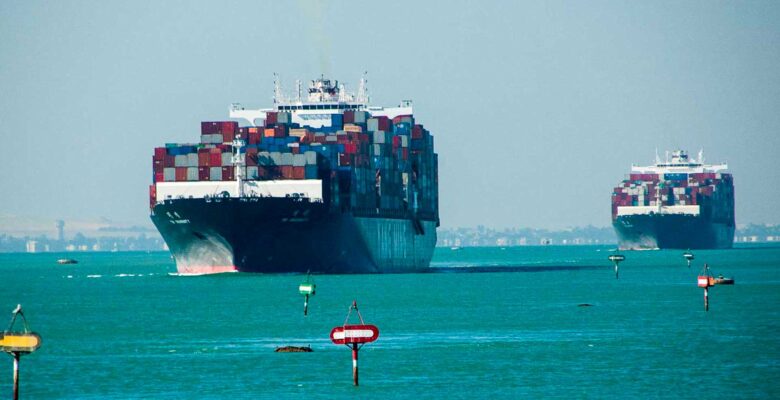
Container ships divert away from Suez Canal
Following a series of attacks on container ships off the coast of Yemen shipping lines are suspending passage through the Red Sea to the Suez Canal and diverting vessels around Africa, adding 10 days to transit times.
The day after the Maersk Gibraltar and the MSC Palatium III were attacked, US, UK and French warships shot down more than a dozen Houthi drones.
With the threat to merchant vessels increasing shipping lines, including Maersk, Hapag-Lloyd, CMA-CGM, and Yang Ming, have suspended all sailings to the Suez Canal, until the US and coalition naval forces step up maritime protection in the Red Sea.
ONE vessels are in holding patterns and HMM vessels were seen on Friday being diverted around Africa, while COSCO vessel, the COSCO Galaxy appeared to have stopped into a holding pattern in the Red Sea yesterday, despite the Chinese carrier not yet issuing any statements as to their position on the threat.
Diverting vessels around the southern tip of Africa, via the Cape of Good Hope, adds an additional 4500 miles and ten days transit time for sailings from Asia, which means more fuel and potential insurance ramifications for shipping lines and shippers.
If the rerouting of ships from Asia round the southern tip of Africa is prolonged it would massively reduce effective capacity, which could see freight costs rising significantly.
Today’s AIS data from the region is showing multiple vessels from Maersk, Hapag-Lloyd and ONE holding position north of the risk area, while Evergreen and Wan Hai vessels can be seen moving from the area and two CMA CGM vessels are still moving towards the risk area.
So some vessels are still transiting the Suez Canal, others have diverted and some are holding their positions, and it won’t take long for this uncertainty to start impacting supply chains, particularly if we start to see bunching of ships at ports, which can lead to landside congestion and shortages of equipment.
We have had very limited feedback from the shipping lines at this time, but as we learn how individual vessels and routes are being affected, we will share this information.
We will track the movement of re-routed or delayed vessels and keep customers informed with updated ETA’s.
